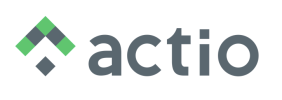Problem Solving
Introduction:
Problem Solving, also known as Follow-up Report, Deviation Report, or Non-conformance Report, is a fundamental tool that allows for the analysis of problems, their causes, and the implementation of appropriate measures to correct deviations, thereby prioritizing the excellence and quality expected by managers and clients.
Imagine a government facing a budget deficit. The managers meet, analyze, debate, and formulate various actions and goals to achieve financial balance. However, in the first month of implementation, they realize that nothing worked.
To identify the possible causes of unmet goals, it is necessary to evaluate which factors contributed to these deviations. This can be done through Problem Solving—a report jointly created by the responsible managers whenever deviations from the accumulated goals are observed.
This report should include the deviations, the factors that most influenced the negative results, and the proposed actions to correct the causes.
Procedures:
A Problem Solving report is generated automatically based on the configuration set in Settings > General Settings > Beacons > Enable Problem Solving generation.
Through the menu Settings > Problem Solving, it is possible to configure the fields and behavior of the reports:
Consider a Problem Solving report filled only if there is a registered action: Checking this option means the report will only be considered filled if a corrective action is recorded in it.
Signal the status of the Problem Solving in the beacon: Checking this option will cause a warning sign to appear next to the beacon if the report is pending completion:
And if it is filled, a tick will appear:
Use outdated report: With this option checked, when there is a change in value that generates a new report, the previous filled report will be marked as outdated. See the topic “How the Outdated Problem Solving/Follow-up Report Flow Works”: https://www.manula.com/manuals/stratec-informatica/gestao-estrategica-2-0/1/en/topic/como-funciona-o-fluxo-de-relatorio-de-acompanhamento-defasado.
Enable automatic sending of Problem Solving after being saved: When this option is checked, a field called “Collaborators’ Problem Solving Emails” will be available on the item’s summary screen. You can enter the collaborators who will receive the report via email every time it is saved. Attention! Ensure that the collaborators have a registered email address.
Require actions for all Causes: This requires an action to be registered for each cause included in the report. Attention! Causes without actions will be automatically deleted when saving the report.
Generate Problem Solving for accumulated value: The software default is to generate the report for the period values, but by checking this option, the options “Only in accumulated” and “In period and accumulated” will appear, with only one of them being selectable. By selecting “Only in accumulated,” the report will be generated only for accumulated values, and by selecting “In period and accumulated,” it will be generated for both period and accumulated values.
Optional fields: Here you can define which fields will or will not be used in the report and whether they will be mandatory or not.
Enable chart: By enabling this option, the indicator chart will appear when viewing the problem-solving report:
Enable copy: By enabling this option, you can copy data from one report to another. To do this, access the pending report > click the copy icon:
Select a filled report and confirm:
Upon confirmation, be attentive to the message that will appear:
Enable Guidance: By enabling this option, a free text field will appear next to it, where instructions for users on how to fill out a problem-solving report can be added. These instructions will also appear in the report itself:
How to fill out a Problem Solving report
To fill out a problem-solving report, you can access the menu Manage > Problem Solving, locate the report that needs to be filled > click on the three dots > Edit:
Or through the indicator itself by clicking on the beacon.
Conclusion:
This topic demonstrated how to configure and fill out a problem-solving report.














